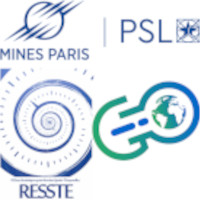The Stochastic Partial Differential Equation (SPDE) approach is revisited from a mechanistic perspective based on the movement of microscopic particles, thereby relating pseudo-differential operators to dispersal kernels. A connection between Lévy flights and PDEs involving the Fractional Laplacian (FL) operator is established. The corresponding Fokker-Planck PDEs will serve as a basis to propose new generalisations by considering a general form of SPDE with terms accounting for dispersal, drift and reaction. The difference between the FL operator (with or without linear reaction term) associated with a fat-tailed dispersal kernel and therefore describing long-distance dependencies and the damped FL operator associated with a thin-tailed kernel, thus corresponding to short-distance dependencies, is detailed. Then, SPDE-based random fields with non-stationary external spatially and temporally varying force are illustrated and nonlinear bistable reaction term are introduced. The physical meaning of the latter and possible applications are discussed. Returning to the particulate interpretation of the above-mentioned equations, their links with point processes is described in a particular case. We unravel the nature of the point processes they generate and show how such mechanistic models, associated to a probabilistic observation model, can be used in a hierarchical setting to estimate the parameters of the particle dynamics.
- Poster

 PDF version
PDF version

